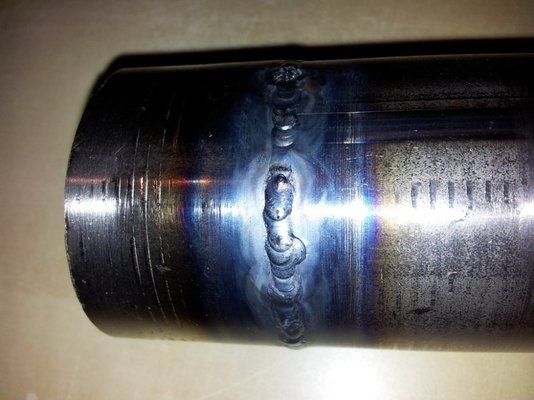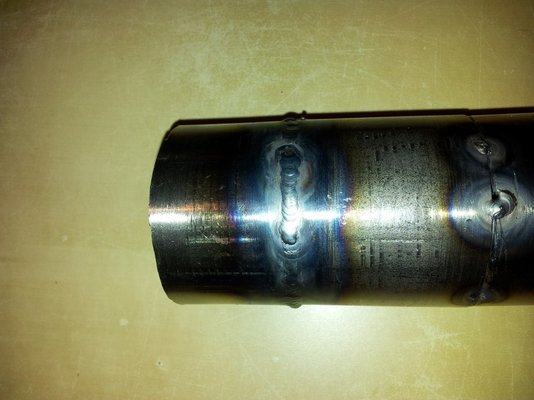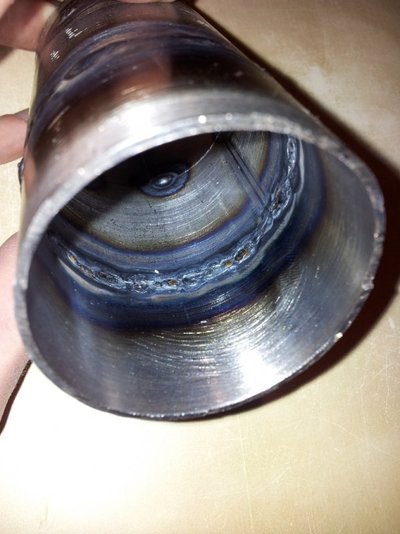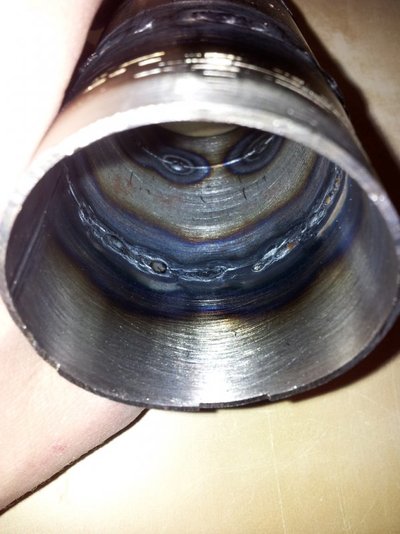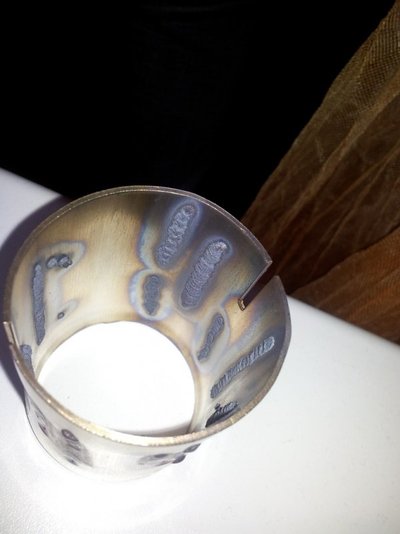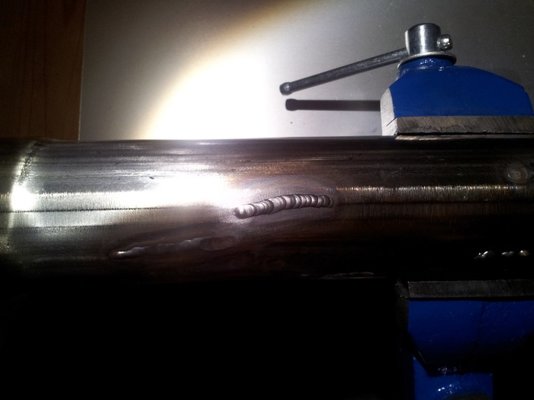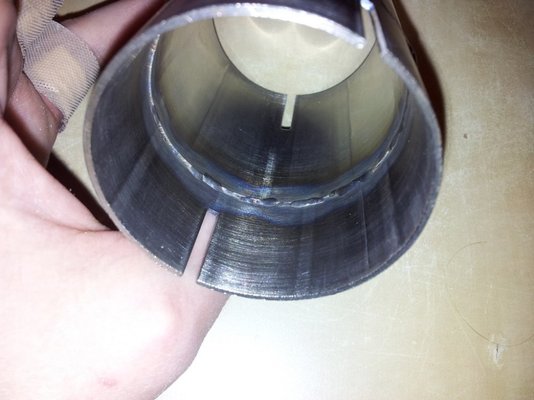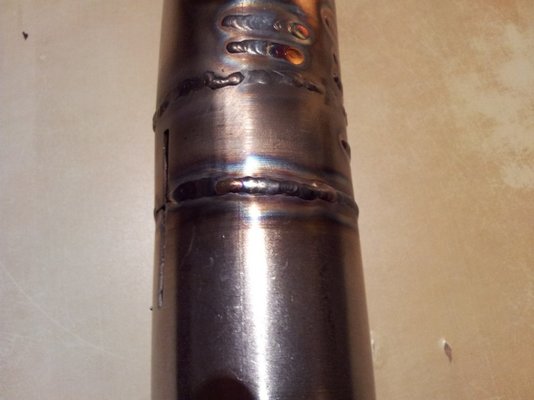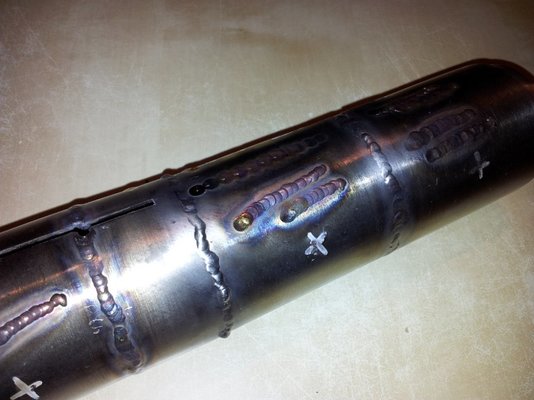Hi all,
New user, first post, so excuse my not keeping up with the forum standards and perhaps asking things covered already (did search, and found some information I need, just want to confirm some things and ask other). Also, up front, excuse my lengthy posts, I am usually keyboard happy
The story is short, I am fascinated with tig welding, but so far have never done it. More generally, I only played with a cheap stick welder for a day or so (not a very pleasant experience). My application target is mostly neat fabrication of a car exhaust system (in other words, I am preparing for my next car project, on the previous project I did the cutting and sizing myself, but had the welding done by professionals, and it bothers me that this is the only thing I cannot do myself). So, having a considerably sized bag of scraps from the previous project I though I'd give it a try by renting a small, yet proper tig welder for a week and see what I can do. I have a nearby shop that rents the stuff out and has very decent machines, I am thinking Rehm Tiger 170 DC would be just what I need (convenience link - http://www.rehm-online.de/index.php?id=37&L=1).
The advice I need confirming or given is this. I have a bag of 2inch exhaust piping remains, both mild steel and stainless (304L I believe, whatever Jetex makes) to practice on. (I also have thicker plates of mild steel to see if things work for me at all for starters.) The wall thickness is 1.5mm. The first thing I need to know is type and size of the electrode that would be good for this. For the size it seems to me that 1.6mm would do it nice, but I am not certain. For type, well, tell me? I am after one type that would work for both. Then the filler rod size? Should it be the same for stainless or mild, or different? Would 1.6 do it, or is it too thick? Is the 316Lsi rod good for welding 304L steel (my understanding from reading things is that it is, but what do I know...) Finally, some ball park figures on the settings. The amerage in general for this kind of application is not too mysterious too me (I should be trying things in the 40-60 range from what I have read), but for stainless I know that pulsing is the way to go, and the mentioned welder has it fully setable (t1/t2 and i1/i2). Here, I'd had no idea where to start.
I do understand that I am up for something difficult, that I will have to try things on my own, and that you cannot give me a straight recepie or answers. I just do not want to start too far off, and since I will be renting the machine, I will be a bit under time pressure, so I want to be prepared. And, it is only for a practice and learning, I will not yet be welding anything that will be later used by me or anybody else.
Cheers,
Woj
New user, first post, so excuse my not keeping up with the forum standards and perhaps asking things covered already (did search, and found some information I need, just want to confirm some things and ask other). Also, up front, excuse my lengthy posts, I am usually keyboard happy
The story is short, I am fascinated with tig welding, but so far have never done it. More generally, I only played with a cheap stick welder for a day or so (not a very pleasant experience). My application target is mostly neat fabrication of a car exhaust system (in other words, I am preparing for my next car project, on the previous project I did the cutting and sizing myself, but had the welding done by professionals, and it bothers me that this is the only thing I cannot do myself). So, having a considerably sized bag of scraps from the previous project I though I'd give it a try by renting a small, yet proper tig welder for a week and see what I can do. I have a nearby shop that rents the stuff out and has very decent machines, I am thinking Rehm Tiger 170 DC would be just what I need (convenience link - http://www.rehm-online.de/index.php?id=37&L=1).
The advice I need confirming or given is this. I have a bag of 2inch exhaust piping remains, both mild steel and stainless (304L I believe, whatever Jetex makes) to practice on. (I also have thicker plates of mild steel to see if things work for me at all for starters.) The wall thickness is 1.5mm. The first thing I need to know is type and size of the electrode that would be good for this. For the size it seems to me that 1.6mm would do it nice, but I am not certain. For type, well, tell me? I am after one type that would work for both. Then the filler rod size? Should it be the same for stainless or mild, or different? Would 1.6 do it, or is it too thick? Is the 316Lsi rod good for welding 304L steel (my understanding from reading things is that it is, but what do I know...) Finally, some ball park figures on the settings. The amerage in general for this kind of application is not too mysterious too me (I should be trying things in the 40-60 range from what I have read), but for stainless I know that pulsing is the way to go, and the mentioned welder has it fully setable (t1/t2 and i1/i2). Here, I'd had no idea where to start.
I do understand that I am up for something difficult, that I will have to try things on my own, and that you cannot give me a straight recepie or answers. I just do not want to start too far off, and since I will be renting the machine, I will be a bit under time pressure, so I want to be prepared. And, it is only for a practice and learning, I will not yet be welding anything that will be later used by me or anybody else.
Cheers,
Woj




